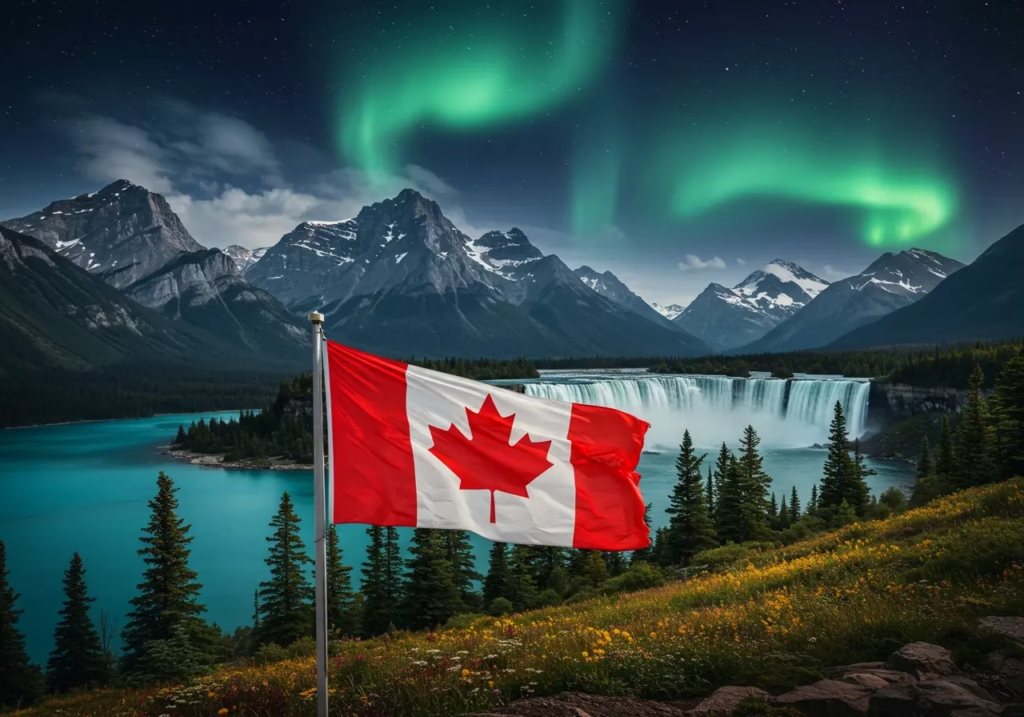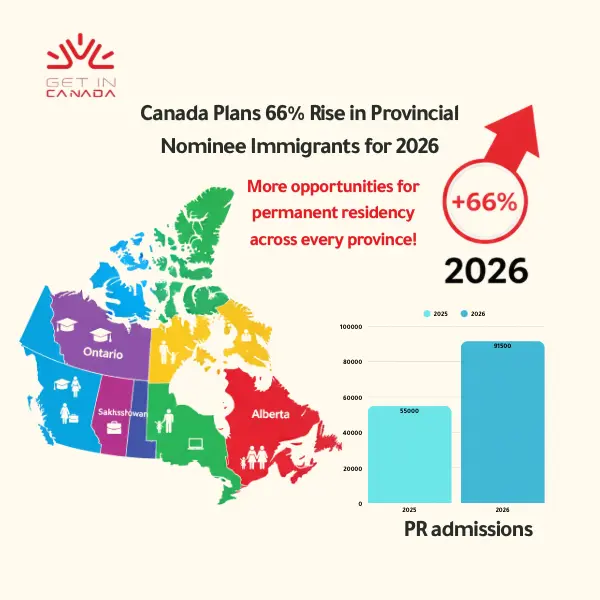Exploring the Natural Wonders of Canada

Canada, the second-largest country in the world, is a treasure trove of natural beauty, spanning from snow-capped mountains and glacial lakes to ancient forests and polar landscapes. Whether you’re chasing the aurora borealis, hiking through alpine meadows, or witnessing the power of Niagara Falls, the natural wonders of Canada offer something unforgettable for every traveler. This guide will take you on a virtual journey through Canada’s most iconic and awe-inspiring natural destinations.
Canadian Rockies – A Mountain Wonderland
The Canadian Rockies are among the most iconic natural wonders of Canada, stretching across Alberta and British Columbia. This vast region is famed for its snow-capped peaks, glacial lakes, and diverse ecosystems. From Banff and Jasper National Parks to scenic highways like the Icefields Parkway, the Rockies offer a perfect blend of adventure and serenity. Whether you’re hiking, skiing, or simply soaking in the mountain views, the Rockies provide endless ways to connect with nature.
Banff and Jasper National Parks
Nestled in the heart of Alberta, Banff and Jasper National Parks are UNESCO World Heritage Sites and two of Canada’s most stunning alpine preserves. Banff’s Lake Louise and Moraine Lake are postcard-perfect, with their turquoise waters surrounded by snow-draped peaks. Jasper’s Maligne Lake and Spirit Island are equally captivating, offering fewer crowds and more wildlife sightings.
These parks offer everything from glacier trekking to hot spring soaking. Don’t miss the Icefields Parkway, one of the most scenic drives in the world. Wildlife like elk, bighorn sheep, and grizzly bears roam freely here.
Parks Canada – Banff | Jasper National Park
Outdoor Adventures in the Rockies
Beyond sightseeing, the Rocky Mountains offer year-round outdoor adventures. In summer, hikers conquer the Plain of Six Glaciers, rock climbers test their skills on limestone cliffs, and canoeists paddle across emerald lakes. Winter turns the region into a snowy paradise, ideal for skiing at Sunshine Village or Lake Louise Ski Resort.
Scenic drives, like the Trans-Canada Highway and Icefields Parkway, provide access to lookout points, waterfalls like Athabasca Falls, and glaciers like the Columbia Icefield, where you can walk on ancient ice
Find out if you are eligible to get in Canada →
Niagara Falls – Nature’s Power on Display
Niagara Falls stands out as one of the most visited natural wonders of Canada, attracting millions of visitors annually. Located on the border of Ontario and the United States, this awe-inspiring waterfall showcases the sheer power of nature in Canada. The misty cascades, dramatic views, and thrilling boat rides make it a must-see destination for families and adventurers alike.
Natural Power and Beauty
Located on the Ontario–New York border, Niagara Falls is one of the most powerful waterfalls in the world, with more than 168,000 cubic meters of water thundering over the edge every minute. The mist, roar, and sheer scale of this site make it one of the top natural attractions in Canada.
Visitors can get up close via the Hornblower Niagara Cruises, view the falls from behind at Journey Behind the Falls, or soar overhead with a helicopter tour. The nightly illumination and summer fireworks shows add an enchanting glow to the natural spectacle.
Niagara Falls Tourism | Niagara Parks Canada
Things to Do Around Niagara
Beyond the falls, the Niagara region offers hiking trails along the Niagara Gorge, wine tasting in Niagara-on-the-Lake, and fun on Clifton Hill, home to museums and amusements. Nature lovers can explore the Niagara Glen Nature Reserve or walk the White Water Walk along class VI rapids.
Northern Lights in Canada – A Celestial Spectacle
Few experiences match the magic of seeing the northern lights, one of the most enchanting natural wonders of Canada. Best viewed in the Yukon, Northwest Territories, and Manitoba, the aurora borealis transforms the night sky into a shimmering canvas of color. Winter travel to Canada offers the perfect chance to experience this phenomenon in comfort through guided aurora tours and Indigenous-led cultural experiences.
Where and When to See the Aurora Borealis
The northern lights, or aurora borealis, are one of Canada’s most magical natural wonders. The best places to view them include Yellowknife (Northwest Territories), Whitehorse (Yukon), and Churchill (Manitoba). The optimal viewing season runs from September to April, with long, clear nights offering the best chances.
Aurora Village – Yellowknife | Destination Canada Guide
The Northern Lights Experience
Watching the sky shimmer in hues of green, pink, and violet is a once-in-a-lifetime experience. Indigenous-led tours often include cultural storytelling, traditional meals, and warm tent shelters under the stars. Photography tours are popular, especially during solar storm periods when the aurora is strongest.
Coastal Marvels – Canada’s Ocean Wonders
Canada’s coastline is home to some of the most unique natural wonders of Canada, including the Bay of Fundy and Pacific Rim National Park. These destinations showcase the country’s geological diversity, from record-breaking tides to lush temperate rainforests. Coastal hikes, marine wildlife, and cultural heritage make these regions perfect for eco-tourism and nature exploration.
Bay of Fundy – The Highest Tides on Earth
Located between New Brunswick and Nova Scotia, the Bay of Fundy experiences the highest tides in the world, reaching up to 16 meters. Every day, over 100 billion tonnes of seawater flow in and out of the bay. You can literally walk on the ocean floor at Hopewell Rocks during low tide, then kayak at high tide hours later.
Pacific Rim National Park – Rugged West Coast Beauty
On the west coast, Pacific Rim National Park Reserve on Vancouver Island is a biodiverse paradise. Surfers flock to Long Beach, hikers explore the West Coast Trail, and visitors can learn about Nuu-chah-nulth Indigenous culture.
Untamed Wilderness – Forests, Tundra, and Wildlife
The vast wilderness is at the heart of the natural wonders of Canada, offering untouched beauty and incredible wildlife experiences. From moose in Québec forests to polar bears in Manitoba, and orcas off the Pacific Coast, Canada is a dream for wildlife lovers. The country’s remote tundras, boreal forests, and Arctic regions allow you to reconnect with raw nature.
Iconic Canadian Wildlife
Canada is home to some of North America’s most iconic animals: moose, polar bears, grizzly bears, orcas, wolves, and bald eagles. Churchill, Manitoba is known as the “Polar Bear Capital of the World,” while Vancouver Island offers excellent whale watching. Algonquin Park in Ontario is ideal for spotting moose in the wild.
Wildlife Viewing Tips
Respectful wildlife tourism is key. Always observe animals from a distance, never feed them, and travel in small, quiet groups. National parks offer guided wildlife tours and information on safe animal encounters. Use bear-proof containers, follow trail etiquette, and check with rangers before venturing into backcountry.
Find out if you are eligible to get in Canada →
Canada’s National Parks – Protected Natural Wonders
Canada’s national parks protect and showcase many of the most stunning natural wonders of Canada. With 48 parks across the country, each represents a unique biome – from the fjords of Gros Morne to the Arctic tundra of Auyuittuq National Park. These parks are perfect for hiking, canoeing, wildlife viewing, and camping under the stars. They also support sustainable tourism and environmental education.
Some standout parks include:
- Gros Morne National Park (NL): Glacial fjords and the exposed Earth’s mantle.
- Nahanni National Park (NT): Deep river canyons and Virginia Falls.
- La Mauricie (QC): Canoe routes through maple forests.
Full List of Parks – Parks Canada
Best Time to Visit Canada’s Natural Attractions
Timing your visit is essential to fully experience the natural wonders of Canada. Summer brings perfect weather for hiking and camping, while fall is ideal for foliage and photography. Winter opens opportunities for northern light sightings and snow sports, and spring is prime time for waterfalls and wildlife awakenings. Plan according to your adventure style and the region you wish to explore.
- Summer (June–August)
Ideal for hiking in the Canadian Rockies, camping in national parks, wildlife spotting (moose, bears, whales), and scenic road trips along routes like the Icefields Parkway and Cabot Trail. - Fall (September–October):
Enjoy vibrant fall foliage in Ontario, Québec, and the Laurentians. A great time for photography, wine country tours, and autumn hikes in cooler temperatures. - Winter (November–March):
Prime time to see the northern lights in Canada, visit ice hotels in Québec, and enjoy world-class skiing in Whistler, Banff, and Mont-Tremblant. - Spring (April–May):
Witness thawing rivers, powerful waterfalls, wildflower blooms, and emerging wildlife. This is shoulder season, with fewer tourists and great opportunities for nature photography.
Plan ahead and check park openings, especially for remote or seasonal sites.
Seasonal Travel Tips – Parks Canada
Book Your Consultation Session →
A World of Natural Wonders Awaits
From coastlines to mountains, forests to northern skies, the natural wonders of Canada showcase the country’s incredible diversity and ecological richness. Whether you’re planning a family trip, a solo adventure, or a photography expedition, these destinations provide an unforgettable connection to nature. Embrace the wild, respect the land, and leave inspired.
FAQs: Natural Wonders of Canada
- What are Canada’s most famous natural wonders?
Top picks include the Canadian Rockies, Niagara Falls, northern lights, Bay of Fundy, and Pacific Rim National Park. - Where can I see wildlife in Canada?
Wildlife can be seen in almost every national park, especially Algonquin, Banff, and Churchill. - Is Canada good for ecotourism?
Yes! Canada leads in eco-friendly travel, with many parks offering low-impact trails, wildlife tours, and conservation programs. - What’s the best region for road trips?
Try the Icefields Parkway, Cabot Trail (Nova Scotia), or Sea to Sky Highway in British Columbia.











